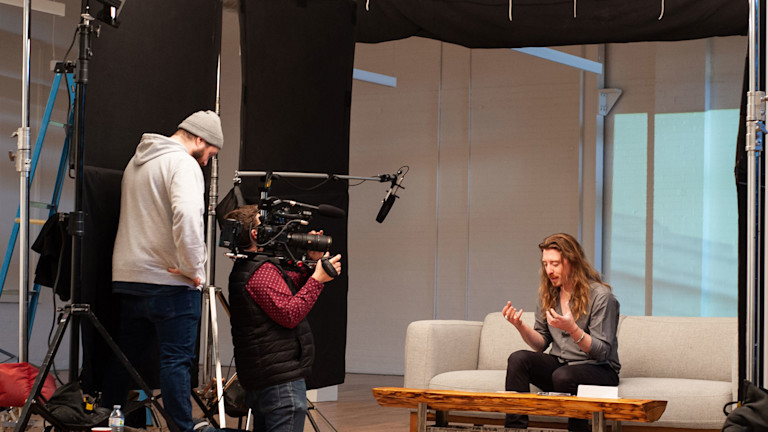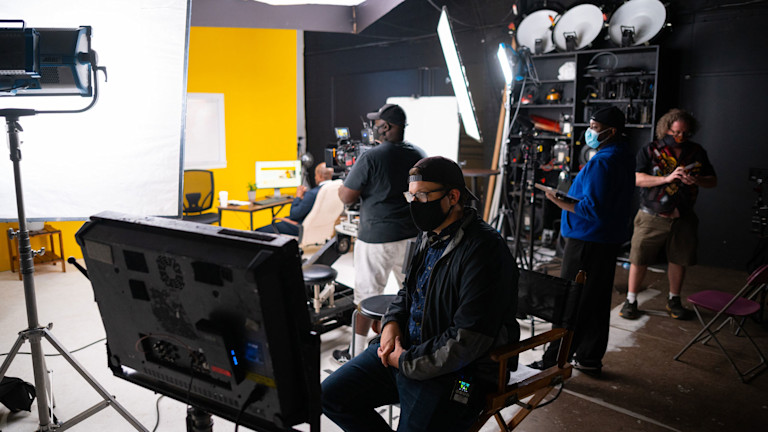"Reel-y" Insightful Key Points
Looking to invest in video production equipment but unsure of what to buy? In this blog post, we’ll provide you with insights into equipment choices for four creative positions:
For DOPs, it may make more financial sense to rent camera brands to test what works best for you and where you feel comfortable before purchasing. A great jumping-off point for those who want to buy is the Sony A7Sii or Panasonic GH5.
Content Creators or Filmmakers should invest in a powerful laptop, a mid-range 4k-capable mirrorless camera (like the Sony a6500 or A7Sii), zoom lenses to cover all focal lengths, and a mid-range tripod to start.
For Influencers or Vloggers, a moderately powerful computer, a camera, a solid wide-angle lens, a shotgun microphone, and a tripod/GorillaPod are necessary. The Sony a6500 is a good option due to its in-body stabilization.
For Marketers, it's important to consider your specific goals and budget when selecting equipment. A good starting point may be investing in a mid-range mirrorless camera such as the Sony a6400 or Fujifilm X-T30, along with basic audio and lighting equipment. Don't forget to also consider investing in quality lenses to improve the overall look and feel of your content.
So what equipment do I need to get started in video? The better question is: where do you want to go with your career? What problem are you trying to solve? What are your goals for the videos you're producing?
Do you plan on becoming a DOP? A content creator? An influencer? A vlogger? Or are you a marketer who’s been tasked with purchasing a small amount of gear to create content in-house?
You may read other blogs on this topic and feel utterly overwhelmed with the amount of equipment needed for video. But the truth is, there isn’t really one camera or piece of equipment that works for everyone. That's why we've broken our blog into roles - rather than listing an overwhelming amount of equipment while we preach that you need it all to get started. As a creative, selecting gear based on your overall goals is one of the most important decisions you will have to make. You’ve scrimped and saved a large amount of money, so you need to get this purchase right.
Five years ago, when I first started, it felt much easier to make a decision on camera and gear. I started with a Canon DSLR, as most did, and graduated up to a “prosumer” cinema camera. But today, the market is flooded with affordable tools and you have more choices! You can find more niche cameras that will better support you as you grow in your career.
Let’s take a look at each of those creative positions and the equipment we would suggest:
Director of Photography (DOP)
Every DOP will tell you it’s a long and slow grind to working on high-end productions. Most of this gear is well out of the realm of affordability when you’re starting your career. Most DOPs work, save money, and repeat until they make that (extremely) large purchase.
So where does this leave you, a beginner, who wants to break in and build their reel? You’re going to absolutely hate this answer, but it depends on your budget.
Ultimately, it may make more financial sense for you to rent multiple camera brands from your local rental house to really test and experience what works best for you and where you feel most comfortable. If you are in the ‘buy now’ mentality, a great jumping off point is the Sony A7Sii or the Panasonic GH5.
These two cameras hit the high end range of mirrorless prices, but are completely worth their upfront cost. Both come equipped with in-body stabilization to allow you to render a steadier shot without the need for extra equipment. Both shoot a flat colour profile to allow you to tweak aspects in post. I could go on and on about these two cameras, but I will let you compare for yourself.
When it comes to glass, remember the old adage: “marry your glass, date your camera body”. Right off the bat, invest in good quality glass; if you can’t afford it, rent it on a per project basis. Again, if you’re in a ‘buy now’ mentality I would suggest investing in a nice set of spherical primes.
When I began purchasing lenses, I chose compatibility and scooped up Canon glass whenever I had the chance and funds. Lately however, I’ve begun building a kit that contains Sigma ART glass. Sigma is a third party brand and have recently launched their ART line, this entire line renders some great colors and are astoundingly sharp. I cannot honestly speak higher of the entire Sigma line.
Finally, lighting. This one is tough. Lighting is expensive for a good quality kit. Again, renting is likely the best and most affordable way for you test all types of lighting fixtures, the options are endless and there always seems to be a new fixture or company coming out with a game changing lighting solution.
Content Creator or Filmmaker
This is a pretty broad term. I generally categorize these people into a one-stop video shop. These creatives handle everything from top to bottom, so your gear list grows with the extra demand in pre-production and post-production.
At a quick glance, you will need:
A camera & accessories
Lenses
Tripod
Desktop/Laptop
Printer/Scanner
Extra CPU Monitor
This list might seem excessive, but I haven’t even gotten to grip/lighting (G&E) equipment, stabilization, office furniture, hard drives/storage, etc. The list is endless in this realm, and generally, it’s the most expensive way to get into the video production field.
This is how I began my career, and I can personally attest to the large upfront cost. My advice would be to start off by investing in a powerful laptop to edit on the fly, a mid-range 4k capable mirrorless camera (like the Sony a6500 or A7Sii), some zoom lenses to cover all focal lengths, a mid-range tripod, and then invest from there.
Influencer or Vlogger
Ok, this setup is not nearly as complex or as expensive. What you really need is a mildly powerful computer, a camera & its accessories, a solid wide-angle lens (not a fisheye), a shotgun microphone, and a tripod/GorillaPod. We recently just bought a Sony a6500, a Sigma 16mm lens, and a GorillaPod.
We did a fair bit of research on cameras and accessories and we landed on the a6500. So far we’re extremely happy with our purchase! What drew us to the a6500 was the in-body stabilization, the 5-point stabilization allows you to render a pretty steady shot while just simply doing handheld. There are other options out there, like the Canon M50, the Panasonic GH4 or GH5, the Sony a6300… Again, this comes down to your budget and the specs you get with different bodies from different brands.
Marketer
Earlier in my career, I had the opportunity to build out a small studio for a large global agency looking to bolster the video production agency side of their business. This studio was later dubbed as the digital innovation/creative studio. I was tasked with building a sheet of potential equipment that would meet two goals.
First, to meet the needs of the entire creative department, which included graphic designers, photographers, and myself a videographer. Obviously, usability was key, not everyone understands cameras or has time to sit down and learn the system.
Second, to meet the needs of the agency on a larger scale. At the time, our GM had some lofty goals to rejuvenate the agency’s brand and begin expanding into other avenues due to the economics of agencies changing drastically over the last 5 years.
We ended up landing on the A7Sii, with an array of Canon lenses, a tripod, some paper backgrounds, and much much more. Yes, the needs for this agency may be a little different than your own company’s needs. That’s why you need to establish a clear plan and clear goals. Are you aiming to release a weekly vlog? Are you planning on building out a small production team? What are your goals as a marketer using video as a medium?
Ultimately, the information mentioned in the above sections will prove useful for you as well. Deciding on a camera is still very important even for a company, whether that be a startup or a fortune 500. The upfront costs of camera equipment when building something from the ground up can be astronomical, even when buying low to mid-range equipment.
In conclusion...
To reiterate, there isn’t that one perfect camera that does everything you need. Your best friends are Google, Reddit, and camera information forums.
Make a list of your goals
Establish your budget early
Do lots of research
Consider renting some equipment to test different camera brands
Spend smartly, and be aware that cameras depreciate in value (they are electronics after all)
Enjoy the process, and happy shooting!
Author: Brad Scholl
Ready to rumble?
For over 10 years, we’ve helped B2B marketing teams create standout content, without the stress. Our video projects typically range from $15K to $100K+, so it’s worth choosing a partner who knows how to make that investment in your brand count. If you're looking for a creative video team who gets it, let’s talk.




